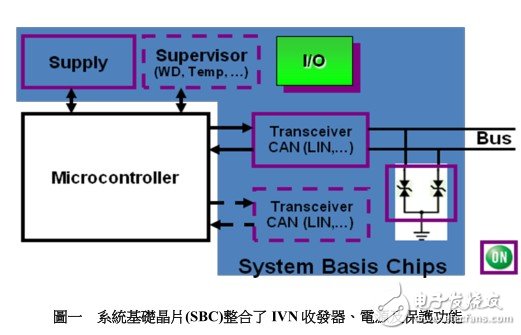The transition from traditional car point-to-point wiring to the use of industry-standard in-vehicle networks (IVNs) enables automakers to add many new electronic features to comfort, convenience and infotainment systems, optimizing chassis and powertrain control, and Electrify various subsystems to save cost and reduce weight.
A variety of in-vehicle networks using different protocols coexist in the same car and can support a large number of nodes. In the early 21st century, there might be only a few network nodes in a typical car. Now the number has increased to more than twenty, and today some high-end luxury models may have more than 100 network nodes. Factors contributing to the rapid increase in the number of such nodes include the use of electronically controlled lighting such as LED bulbs in automotive interior and exterior applications, and the use of advanced driver assistance systems (ADAS) such as collision avoidance and pedestrian identification.
Another factor to be considered is the effect of hybrid electric vehicles (HEV) and micro-hybrid technology; the integration of energy recovery devices and electronic traction systems in HEVs further increases the connection requirements in automobiles.
Multiple bus bars, more nodes
Several different busbars and multiple protocols are commonly used in automobiles to meet the different needs of body electronics systems, powertrain controllers, infotainment systems, and safety-oriented electronic functions. Industry standards covered include Regional Interconnect Network (LIN) and SAE J2602, Controller Area Network (CAN) and FlexRay.
More high-bandwidth signals, such as camera-mounted signals placed on the body, may be delivered using the 24.8 Mbps Media Oriented System Transport (MOST) standard or the IDB-1394 (Steam FireWire) standard operating at 800 Mbps. Ethernet Ethernet will also be a feature of future cars to match high data rate applications and serve as a backbone network for connecting different functional subnetworks.
LIN supports data rates up to 20 kbps, which is sufficient to control a wide range of body electronics applications such as window regulators, rearview mirrors and headlamp adjusters, seat position adjustment mechanisms, and other motors, pumps and fans. LIN supports simple command/confirmation communication; intelligent subsystems such as electromechanical modules are responsible for generating the required motor drive waveforms [ more details ]

CSRME Safety Controller is developed for standard GB27607. By monitoring machine tool safety related equipment, the security of machine control system can meet the requirements of GB27607, and its security meets the requirements of ISO13849-1 (PLe) and IEC61508 (SIL3).
With rich interfaces, CSRME has limited programmable function. It can simultaneously replace many different types of safety control modules or safety PLCs, thus greatly simplifying the safety design of machine control systems and reducing cost.
Safety Controller
Safety Controller,Modular Safety Controller,Safety Controller,Electrical Safety Controller,Programmable Logic Controller,Banner Safety Controller
Jining KeLi Photoelectronic Industrial Co.,Ltd , https://www.sdkelien.com
